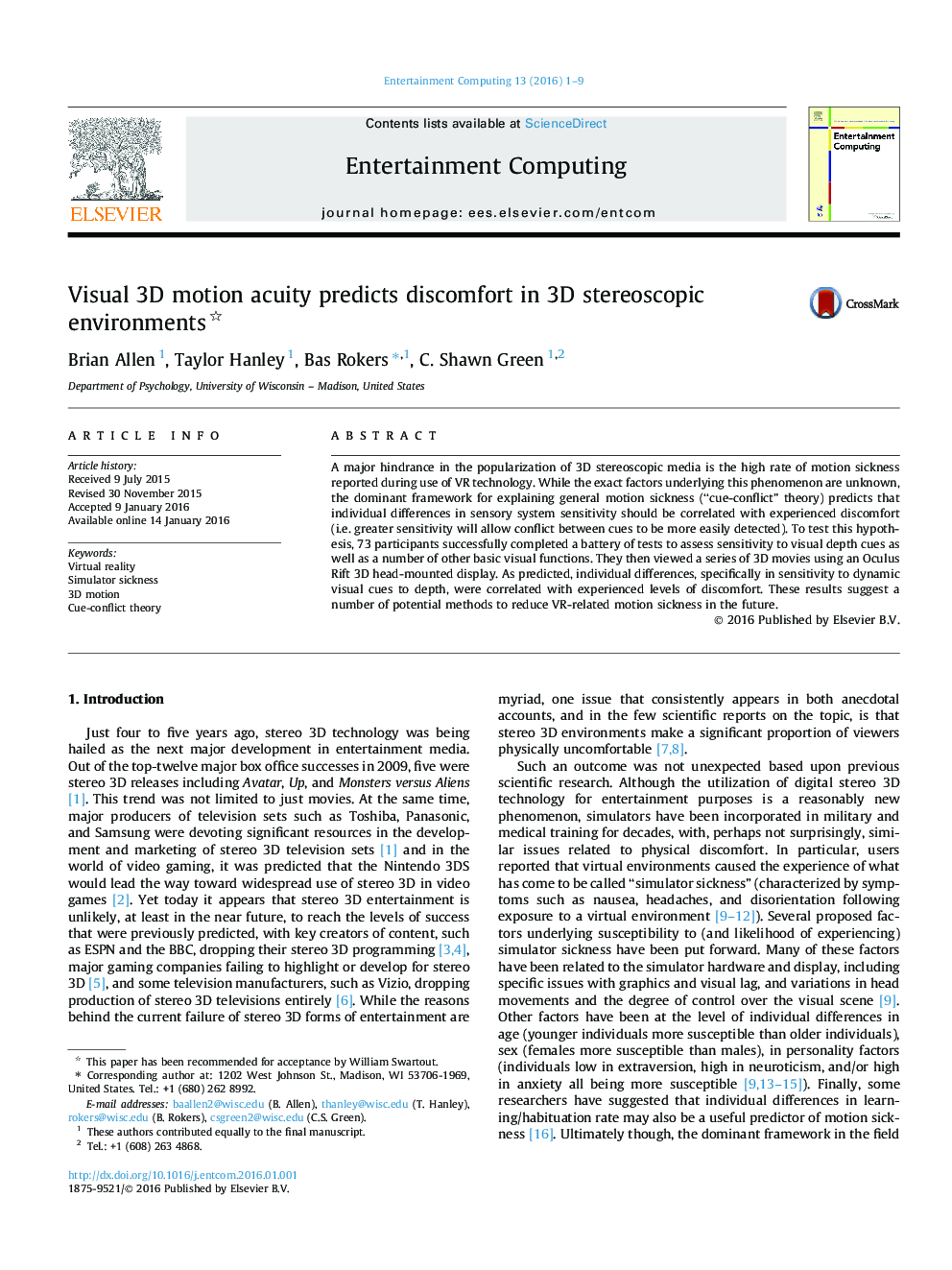| کد مقاله | کد نشریه | سال انتشار | مقاله انگلیسی | نسخه تمام متن |
|---|---|---|---|---|
| 381806 | 659761 | 2016 | 9 صفحه PDF | دانلود رایگان |
• Greater visual sensitivity to 3D motion linked to higher risk of discomfort in VR.
• Other visual abilities (e.g. simple acuity) were not associated with increased risk.
• These findings support the cue-conflict theory of motion sickness.
• Provides methods to identify those at risk for discomfort in 3D environments.
A major hindrance in the popularization of 3D stereoscopic media is the high rate of motion sickness reported during use of VR technology. While the exact factors underlying this phenomenon are unknown, the dominant framework for explaining general motion sickness (“cue-conflict” theory) predicts that individual differences in sensory system sensitivity should be correlated with experienced discomfort (i.e. greater sensitivity will allow conflict between cues to be more easily detected). To test this hypothesis, 73 participants successfully completed a battery of tests to assess sensitivity to visual depth cues as well as a number of other basic visual functions. They then viewed a series of 3D movies using an Oculus Rift 3D head-mounted display. As predicted, individual differences, specifically in sensitivity to dynamic visual cues to depth, were correlated with experienced levels of discomfort. These results suggest a number of potential methods to reduce VR-related motion sickness in the future.
Journal: Entertainment Computing - Volume 13, March 2016, Pages 1–9
